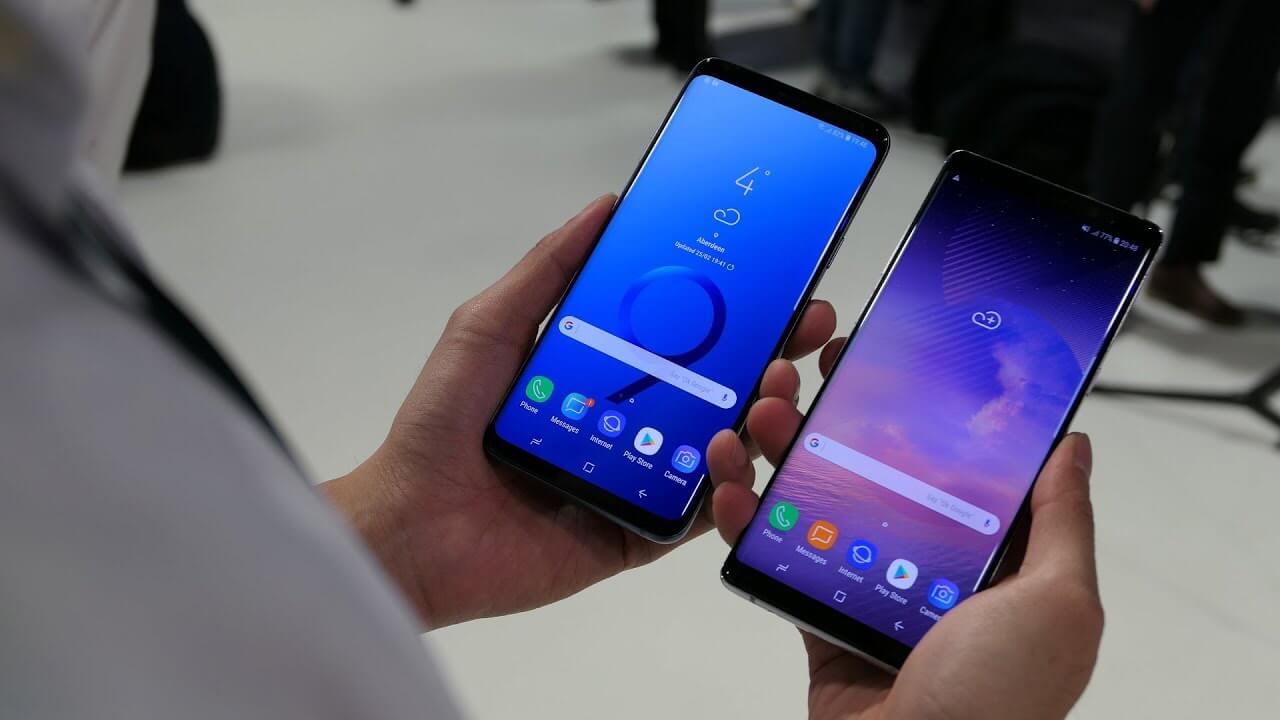Samsung Galaxy S9 vs. Samsung Galaxy S10: Comprehensive Comparison Guide

The evolution of Samsung’s Galaxy S series reflects the brand’s commitment to innovation and user experience. The Galaxy S9, launched in 2018, and its successor, the Galaxy S10, released in 2019, are two iconic models that appeal to different user preferences. If you’re considering upgrading or choosing between these two devices, this in-depth comparison will help you make an informed decision.
SEE ALSO: TOP 5 SMARTPHONES TO LOOK AT IN 2025
Key Differences at a Glance
To better understand the upgrades between the Galaxy S9 and S10, let’s take a quick look at their key specifications and features in the table below:
| Feature | Samsung Galaxy S9 | Samsung Galaxy S10 |
|---|---|---|
| Launch Year | 2018 | 2019 |
| Display | 5.8-inch Super AMOLED, 1440 x 2960 | 6.1-inch Dynamic AMOLED, 1440 x 3040 |
| Processor | Exynos 9810 / Snapdragon 845 | Exynos 9820 / Snapdragon 855 |
| RAM | 4GB | 8GB |
| Storage Options | 64GB, 128GB, 256GB | 128GB, 512GB |
| Rear Camera | Single 12MP | Triple (12MP + 12MP + 16MP) |
| Front Camera | 8MP | 10MP |
| Battery Capacity | 3000mAh | 3400mAh |
| Operating System | Android 8.0 (upgradable) | Android 9.0 (upgradable) |
| Security Features | Fingerprint Scanner, Iris Scanner | Ultrasonic Fingerprint Scanner |
| Price at Launch | $719 | $899 |
- Display and Design
- Samsung Galaxy S9
- The Galaxy S9 features a 5.8-inch Super AMOLED display with a resolution of 1440 x 2960 pixels. Its compact size is ideal for users who prefer one-handed operation. The bezels are minimal but noticeable compared to modern standards. Samsung retained the rear-mounted fingerprint scanner and added an iris scanner for enhanced security.
With the Galaxy S10, Samsung introduced the Infinity-O display, a near-bezel-free design with a punch-hole for the front camera. Its 6.1-inch Dynamic AMOLED screen delivers improved brightness, color accuracy, and HDR10+ support for a more immersive viewing experience. The ultrasonic fingerprint scanner embedded under the screen represents a significant technological leap.
Verdict: The Galaxy S10’s larger and more advanced display offers a superior viewing experience.
- Performance
- Samsung Galaxy S9
- The S9 is powered by the Exynos 9810 (global variant) or Snapdragon 845 (US variant), paired with 4GB of RAM. These components ensure smooth multitasking and decent gaming performance, but the device may struggle with resource-heavy applications as it ages.
Samsung Galaxy S10
The S10 steps up with the Exynos 9820 or Snapdragon 855 processor and 8GB of RAM. This combination delivers faster app launches, better multitasking, and an overall snappier user experience. Enhanced AI capabilities also optimize power usage and performance.
Verdict: The Galaxy S10 easily outpaces the S9 in terms of speed and efficiency.
- Cameras
- Samsung Galaxy S9
- The S9 features a single 12MP rear camera with variable aperture technology (ƒ/1.5-ƒ/2.4), excelling in low-light photography. However, the lack of additional lenses limits its versatility.
- Samsung Galaxy S10
- The S10 boasts a triple-camera setup, including:
- 12MP Wide: Variable aperture for low-light performance.
- 12MP Telephoto: 2x optical zoom for detailed shots.
- 16MP Ultrawide: Captures expansive landscapes and group shots.
- The front camera also gets an upgrade, with a 10MP sensor supporting 4K video recording.
- Verdict: The S10’s versatile camera system provides significantly more creative flexibility.
- Battery Life
- Samsung Galaxy S9
- With a 3000mAh battery, the S9 offers moderate endurance. Power users may find themselves charging the device by mid-day.
- Samsung Galaxy S10
- The S10’s 3400mAh battery, combined with more efficient hardware and software optimizations, delivers improved battery life. Additionally, it supports Wireless PowerShare, allowing you to charge other devices wirelessly.
- Verdict: The S10’s larger battery and innovative features make it the clear winner.
- Software and Features
- Samsung Galaxy S9
- Initially shipped with Android 8.0 Oreo, the Galaxy S9 has received updates up to Android 10. While it supports Samsung’s signature features like Bixby and DeX, its software updates have reached their limit.
- Samsung Galaxy S10
- The S10 launched with Android 9.0 Pie and has been updated through Android 12, ensuring access to newer features and security patches. Enhanced AI, better customization options, and support for future updates make it a future-proof choice.
- Verdict: The Galaxy S10’s extended software support gives it an edge.
- Pricing and Value
- The Galaxy S9, being an older model, is significantly cheaper in the second-hand market. It’s an excellent option for budget-conscious buyers who don’t require cutting-edge features. The Galaxy S10, while more expensive, offers better value for its advanced specifications and longer lifespan.
- Final Verdict
- The Samsung Galaxy S10 is undoubtedly a superior device, offering advancements in display technology, performance, cameras, and battery life. However, the Galaxy S9 remains a solid choice for those prioritizing affordability and compactness.
- Who Should Buy the Galaxy S9?
- Budget-conscious users.
- Those who prefer smaller phones.
- Who Should Buy the Galaxy S10?
- Users seeking the latest features and performance.
- Photography enthusiasts.
- Those wanting a future-proof device.
- Both the Galaxy S9 and S10 reflect Samsung’s dedication to quality and innovation. Whether you choose the S9 or S10, you’ll own a device that excels in its class.







